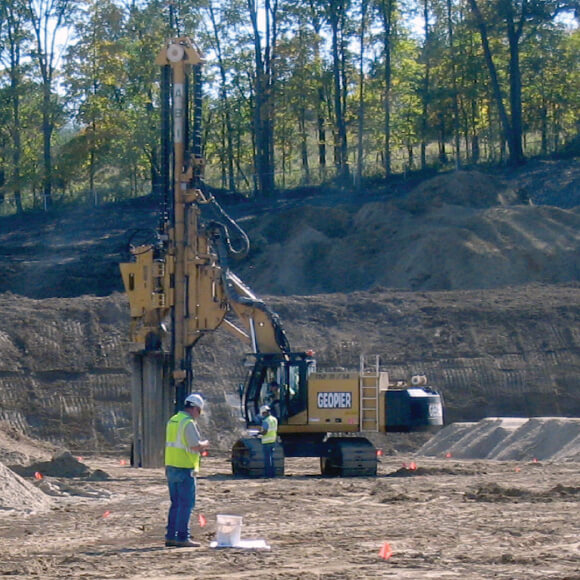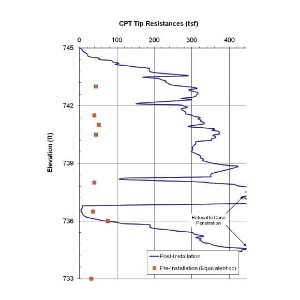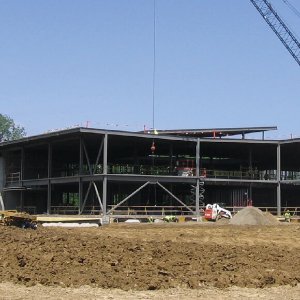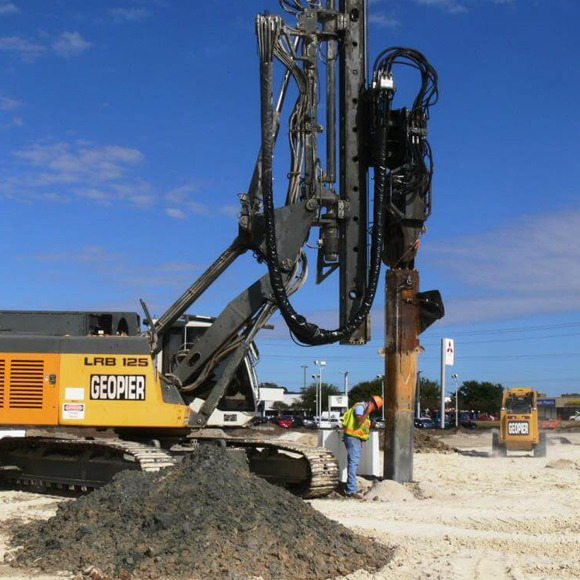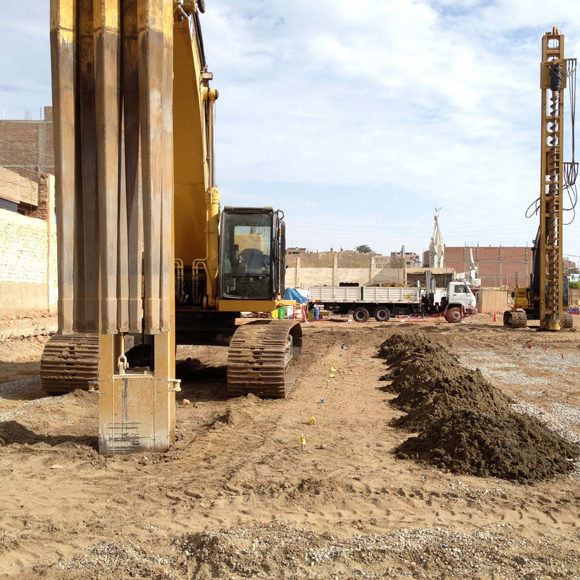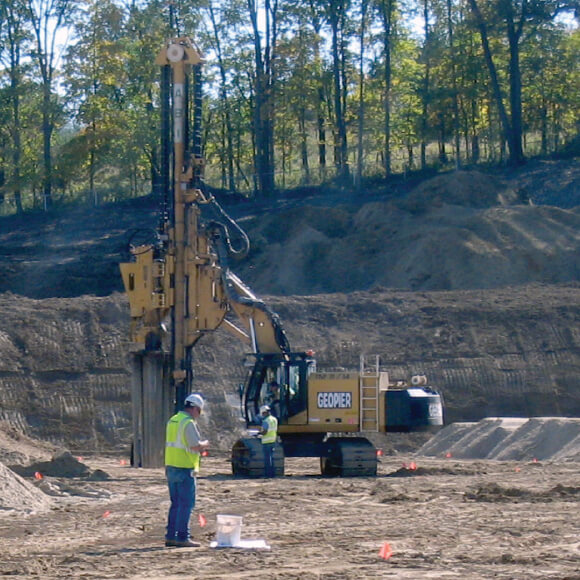
Community School District Services Campus
Combining the Geopier Rampact® and Densipact® systems proves cost-effective and versatile for varied soil conditions to deliver settlement performance
- Owner: Cedar Rapids Community School District
- General Contractor: Knutson Construction Services
- Geotechnical Engineer: Terracon
- Structural Engineer: Shive Hattery A/
The project involved foundation support for a transportation/warehouse facility consisting of three adjacent structures with basements. Design loads ranged from 140 to 600 kips at column locations and 8 to 12 kips per linear foot at wall locations.
The upper 10 to 15 feet of the soil profile below finished grade elevations consisted of loose to medium dense sand with varying amounts of fines underlain by stiff clay and weathered rock. The sand in two-thirds of the site exhibited low fines contents (<10% passing No. 200 sieve), while the remaining areas were characterized by higher fines (15% to 25%). Groundwater table was encountered at approximately 10 to 12 feet below finished grade elevation.
Settlement of the structure was raised as the primary geotechnical concern because of the presence of the loose sand.
A ground improvement approach consisting of an aggregate pier solution was specified by the public owner. An alternative solution consisting of a combination of Rammed Aggregate Pier® reinforcement in the sand with high fines and a Rammed Compaction® solution for the clean sand areas proved to be the most cost-effective and versatile with the varied soil conditions.
The Rammed Aggregate Pier solution using the displacement Rampact® piers was installed to reinforce the saturated silty sand, while Rammed Compaction points were installed using the Geopier Densipact® system to densify the clean sand. A combination of Rampact piers and Rammed Compaction Points was installed along the centerline of the wall footings and within the footprint of the spread footings for column support. The sand strata was reinforced and densified to depths of up to 15 feet to control total settlement to less than 1-inch.
The effectiveness of the Densipact system was verified by performing Cone Penetration Tests (CPTs) before and after installation. The results of the post-installation CPTs indicated that the loose sand strata was effectively densified, attaining tip resistance values of over 300 tsf after densification, resulting in equivalent N-values nearly triple the pre-installation values. Results of tip resistance with depth for representative post-installation conditions are shown.

